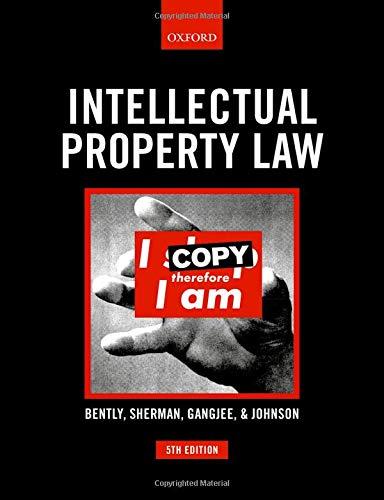Question
Theory to Practice - Chapter 15 (p. 510) Facts: Adams and Barker were two individual scientists engaged in research related to inventing a patentable pharmaceutical
Theory to Practice - Chapter 15 (p. 510)
Facts: Adams and Barker were two individual scientists engaged in research related to inventing a patentable pharmaceutical product. Once they had gained critical mass for the project, they convinced Barker's old college roommate, Cornelius, to invest $100,000 in exchange for an ownership share in a newly formed company called Pharma Corporation (Pharma). The parties agreed that Adams and Barker would continue product development until the company was ready to apply for a patent, then Cornelius would use his contacts to find a manufacturer to produce and market the patented drug. Pharma was structured as follows:
Name Stock Owned (%) Role
Adams 35 President, Director
Barker 35 Vice President, Secretary, Director
Cornelius 30 Shareholder
The parties hired counsel to incorporate Pharma, issue stock certificates, and draft bylaws. The corporate records were then turned over to Barker and she filed them in her desk drawer. No additional formalities were followed and the records were not maintained, nor were any directors' or shareholders' meetings held. In year two, Pharma's application for a patent was rejected. The rejection required Adams and Barker to hire an additional expert to help with research and would put the project behind by approximately 16 months. Adams hired Elliot, a well-known scientist, to help with the project. At this point though, Pharma's financial resources were drying up and, trying to keep the company afloat, Adams began to pay certain Pharma bills with his personal credit card and Baker would sometimes write out personal checks for lab equipment.
Additional facts: In year three, the financial condition of Pharma continued to worsen. A representative of the dominant pharmaceutical company in the market, Multi-Drug (MD), approached Adams and Barker with an acquisition offer. MD offered to pay $50,000 to buy all of Pharma's assets and offered a five-year employment agreement with MD to both Adams and Barker. On the same day as the offer, Adams and Barker send a one-page e-mail to Cornelius informing him that they have voted to approve the sale of assets of Pharma to MD and the transaction would take place in one business day.
3. Which of the following statements is true with respect to the acquisition of Pharma by Multi-Drug?
a. Cornelius is unhappy with the transaction, but as a minority shareholder has no say in the matter.
b. Adams and Barker collectively own 70% of the stock, and they can approve the sale for the assets without Cornelius's approval.
c. Cornelius can file both a direct shareholders lawsuit to require that shareholders approve the transaction and a derivative lawsuit to recover damages for Adams and Barker's breach of fiduciary duty.
d. Adams and Barker have not breached their fiduciary duties (e.g., duty of loyalty and duty to avoid self-dealing) by approving the sale so hastily, because they have control of the corporation.
e. Adam and Barker's decision to sell Pharma to Multi-Drug is protected by the business judgment rule.
Step by Step Solution
There are 3 Steps involved in it
Step: 1

Get Instant Access to Expert-Tailored Solutions
See step-by-step solutions with expert insights and AI powered tools for academic success
Step: 2

Step: 3

Ace Your Homework with AI
Get the answers you need in no time with our AI-driven, step-by-step assistance
Get Started


